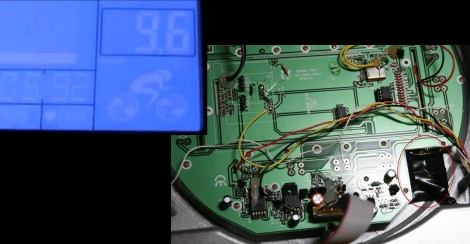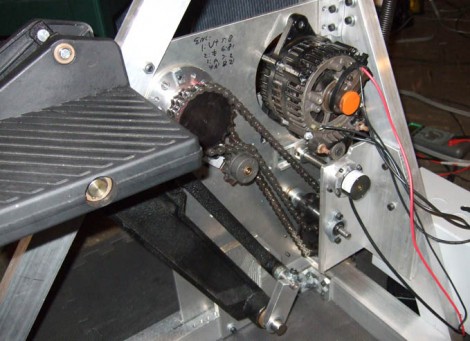
This hack came out so well that [Levent] wishes he had tried it years ago. When exercising he wears a Polar heart rate monitor which sends data from a chest strap to his wristwatch. But his exercise bike also has a heart rate readout that depends on your hands touching metal contacts on the handlebars. He set out to see if he could patch the chest strap data into the exercise bike LCD display.
The first part of the hack is really simple. As we’ve seen several times before, you can buy a receiver module which grabs data from the chest strap. Now it was a matter of patching the data from this receiver into the Schwinn 213 recumbent exercise bike. [Levent] pulled out the PCB and located the small daughterboard that is responsible for the hand grip heart rate. With careful study he was able to identify the pinout. There are two data lines. One is responsible for the heart rate detected signal, the other pushes the actual heart rate data. On a hunch he hooked a signal generator up to the latter and discovered that all it takes is a square wave.
The rest is pretty straight forward. Check out the proof in his video after the break. Continue reading “Pushing Chest Strap Heart Rate To A Stock Exerciser Display”













